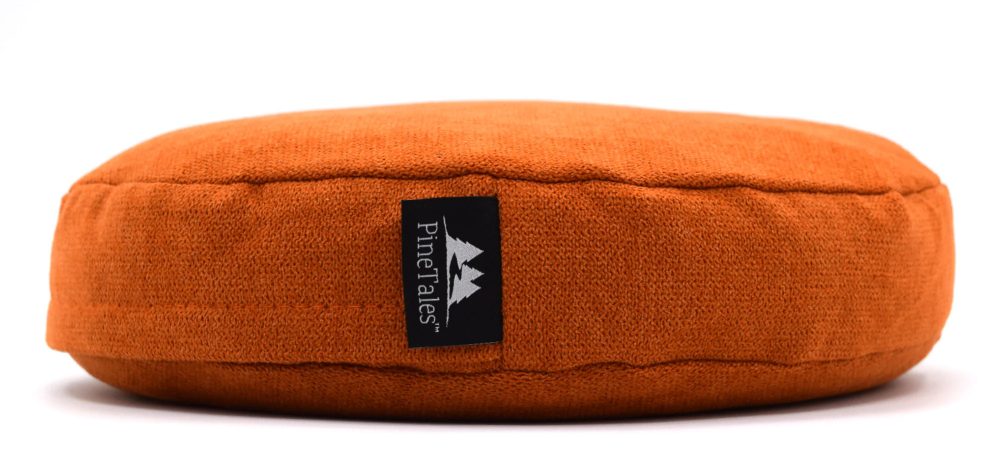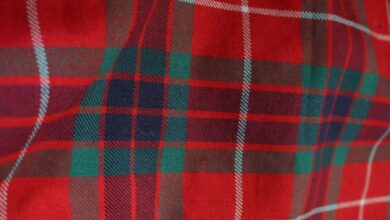How To Buy, Use, And Maintain Your Buckwheat Pillows For Better Sleep
Most people cannot sleep without any pillows. They feel more comfortable when something soft and relaxing supports their head.
With plenty of options in the market, the best pillow differs from one person to another. If you’re trying to be experimental, you may want to try using buckwheat pillows for better sleep.
What Is A Buckwheat Pillow?
A buckwheat pillow uses buckwheat hulls as the primary stuffing material. This is an important distinction. Some people assume that a buckwheat pillow is filled with buckwheat grains. Pillows filled with grains are used as heating pads. If you’re looking for ones to enhance your sleep quality, go for buckwheat pillows filled with hulls, which are the outer shells of the buckwheat grain. They’re small and hard and have a slightly triangular shape.
When you try a buckwheat pillow, you’ll notice that it’s firmer than your traditional cushions. You can easily adjust the height and firmness of buckwheat pillows by taking off some of the buckwheat hulls and storing them in a different container. This allows for a customizable sleep experience that fits you perfectly.
You may need some time to get used to a buckwheat pillow. Nevertheless, it can help you maintain a better posture and remain cool. It can also prevent headaches and migraines, alleviate pain, and reduce snoring, so the switch will surely pay off. You can watch the following video to fully understand what a buckwheat pillow is and its benefits.
Read Also: 8 Ways For Supporting Loved Ones in Mental Health Crisis
How To Shop For Buckwheat Pillow
Buying a buckwheat pillow isn’t just choosing something off the rack and expecting it to be the best. Since this type of pillow will last you for more than a decade owing to its sturdy material, you should go out of your way to buy the best one in the market. To help you out, below are some tips on how to shop for your first buckwheat pillow:
1. Check Stuffing Inclusion
Not everyone’s comfortable with how firm a buckwheat pillow is, but they would love to enjoy its benefits. Some companies are mixing buckwheat pillows with a softer material for a gentler introduction to the switch. This way, the pillow is between something firm and soft, allowing for a smooth transition.
If you’re still on the fence, you can go for the pillow with a mix of stuffing materials. If you want the full experience, double-check that what you’re getting is made of pure buckwheat hulls.
2. Pay Attention To The Pillow Cover
The most common material used to enclose pillow stuffing is cotton, as it’s soft, durable, breathable, and easy to maintain. While there’s nothing wrong with cotton, you may want to explore your options when it comes to the cover material. For example, bamboo fabric is naturally hypoallergenic and moisture-wicking, so it’s great for hot sleepers. However, they’re a bit harder to maintain, so you may need to replace the cover every two years.
Apart from the cover material, you should also check if it has zippers. One of the selling points of buckwheat pillows is how they’re adjustable. But if the cover doesn’t allow for customization, you’ll have to settle with the firmness and thickness the pillow comes with. For a more customized experience, look for a pillow with a zipper enclosure.
3. Confirm How The Hulls Are Treated
Some manufacturers use pesticides to ensure the cleanliness of the hulls before storing them inside the cover. While they’re effective in that they thoroughly clean the hulls, they’re not the most advisable and healthiest option, especially if you can inhale their fumes.
For your safety, confirm with the companies how they treat their hulls. Several companies air-clean their hulls to maintain the organic features of the pillow.
4. Consider Your Sleep Position
Your sleep position affects your sleep experience with a buckwheat pillow. In most cases, back sleepers greatly benefit from this pillow, as it allows for better breathability and formation of the hulls.
Whichever position you sleep into, you can always adjust the hulls, allowing optimal spine alignment and ease. You may also want to try the knee pillow for side sleepers, as it promotes comfort and proper posture. It also relieves lower back and hip pain.
With the tips above, you should be able to narrow down your options and determine which best suits your comfort and needs. You should also look where you’re buying from. Some online sellers are trying to exploit the growing popularity of buckwheat pillows, so be wary. Check the shipping and return policies as well as online reviews.
How To Use Your Buckwheat Pillow
You may take a while to get used to a buckwheat pillow since they’re different from traditionally soft pillows. You may also need guidance on how to sleep with one. Below are some tips on how to use your buckwheat pillow for better sleep:
1. Adjust The Hulls
Buckwheat pillows are typically thick and bulky to accommodate every type of sleeper. To maximize the benefits of a buckwheat pillow, you should adjust the hulls according to your sleep position. Ideally, your head should align with your spine with no room for a slight angle. This helps keep your body in an optimal position, eliminating body pains as you wake up.
You can remove or fill the pillow with hulls to help you achieve the right position for your head and body. You can place your excess hulls in a different container in case you need to add more in the future or replace them with your old ones.
2. Fluff Your Pillow
The hulls inside your pillow move around, as they’re not bound to one another. When you need to hit the hay, fluff your pillow first and keep it leveled. Doing this can help your pillow adjust to your head and form to give you the best support.
Fluffing your pillow doesn’t take too much work, as you only have to keep it flat and even. It doesn’t have to be perfect, just comfortable enough to lay your head in.
However, if you’re a side sleeper, try putting more hulls on the part where your neck goes to support your head. You can then enjoy your sleep in this position without worrying about keeping your spine neutral.
3. Give Time To Adjust
Since the inside of your buckwheat pillow moves around, expect a soft rustling noise when the hulls hit one another. This may be unpleasant at first, especially since you hear the sound whenever you move your head. But luckily, this is something that you can get used to. In time, the rustling sound can be like white noise, something soothing and relaxing. Some users claim the rustling sound softens as the hulls slowly break down.
Before you give up the idea of sleeping with a buckwheat pillow due to its stiffness and sound, try to sleep on it for at least 14 days straight and see if your body can adjust to it. In most cases, this period is long enough to allow you to be comfortable with the feeling and sound.
Knowing how to use your buckwheat pillow can help you get the most out of every inch. This may even be your chance to determine the optimal sleep position. You can then experience better sleep at night and always wake up feeling refreshed. You may need some time to adjust, but the benefits of a buckwheat pillow are worth the switch.
How To Maintain Your Buckwheat Pillow
A typical buckwheat pillow should last about 10 to 20 years, depending on your care and maintenance. This is more than twice the lifespan of your regular pillows, which can last for only about one to two years. Not only can you save money in the long run, but you also don’t have to worry about doing another pillow shopping in a decade or two. To help you maximize your buckwheat pillow’s lifespan, listed below are some tips on maintenance:
1. Avoid Soiling The Hulls
The last thing you want to happen is to soil the hulls. Even a small amount of liquid in the hulls can damage them for good. If this happens, you need to quickly remove the soiled hulls from the pillow cover and expose them to the sun to air dry completely.
As you lay them on a flat surface, ensure that you spread them evenly and allow for even sunlight exposure. You can also stir them periodically to ensure that all sides get equal sun exposure.
You can insert the hulls back into the cover when they are dry. However, there are instances when the hulls may not be completely dried. When this happens, you cannot use them again, so it’s best to replace them.
A great way to protect your hulls from any damage is to use a pillow protector that covers your entire buckwheat pillow. Choose one with a water-resistant feature to ensure no spills come through your pillows.
2. Wash Once Or Twice A Year
Like with any other pillows, you need to wash your buckwheat pillow at least once or twice a year. Keep in mind that the only thing you can wash is the cover. Washing the hulls can lead to disaster as they may never dry. As mentioned above, you have no choice but to replace them when this happens. Stores selling buckwheat pillows also sell hulls separately.
Ideally, you should wash your pillow cover at least once or twice a year, depending on how often you use it. When cleaning your cover, ensure that you remove every hull inside.
After opening the zipper of your cover, use a scooper to grab your hulls and put them in a different container. Alternatively, you can prepare a separate pillowcase and tuck the buckwheat pillow opening ends on the opening of your new case and slowly pass through the hulls to another case. You can tie off the cover with a ribbon or a tie to prevent the hulls from spilling over.
After removing the hulls from the cover, turn it inside out to ensure that not a single hull is caught up in loose threads or edges of the pillow. Once you’re sure that it’s thoroughly empty of hulls, you can wash your cover by tossing them in the washer and dryer. Alternatively, you can hand wash them and let them air dry. You can take advantage of the sunlight’s power to kill harmful bacteria.
Once your cover is completely dry, you can insert the hulls back and let yourself enjoy a good night’s sleep.
3. Prepare Replacement Hulls
After a few years of use, the hulls slowly flatten out, so your pillow’s firmness won’t be the same. You may notice that whenever you need to clean your pillows, the hulls don’t look how they originally came out of the box.
When this happens, it’s time to replace the hulls. You don’t have to replace everything. You can just add a few more cups to your pillow to help you achieve your desired shape and firmness. This doesn’t necessarily mean the end of a lifespan; you only need additional hulls to continue reaping the benefits of your buckwheat pillow.
Maintaining your buckwheat pillows may require extra steps, as you must always keep them dry. Moreover, washing the pillow covers can be a bit of a hassle since you need to remove the hulls from the pillow and bring them back once the cover dries. But with proper maintenance, you can use your pillow for a decade or two.
Takeaway
Knowing how to buy, use, and maintain your buckwheat pillows lets you get the most out of your purchase. Since they don’t come at a low price, you may as well do your research so that you get pillows that offer the best value for every penny you spend on them. And learning how to use them properly allows you to enjoy the full benefits and helps you sleep great every night. Moreover, when you’re diligent with the maintenance, they can last for a decade.










